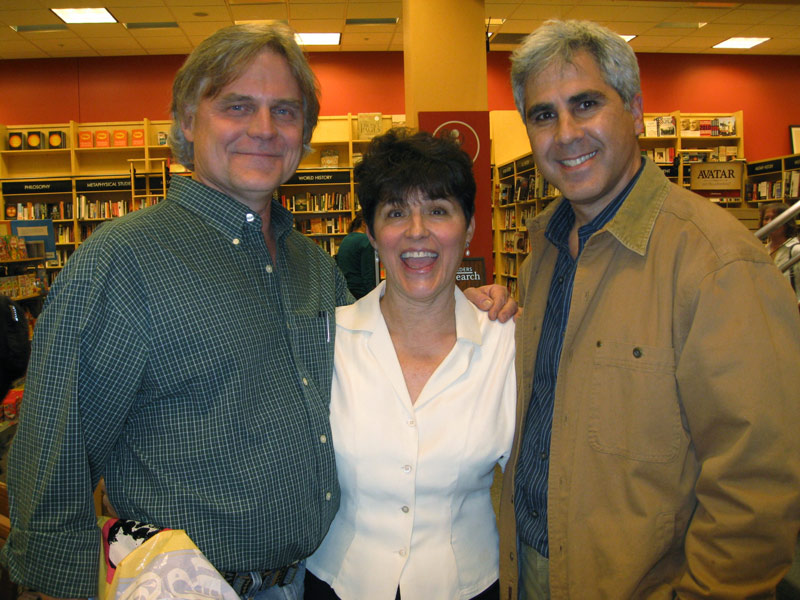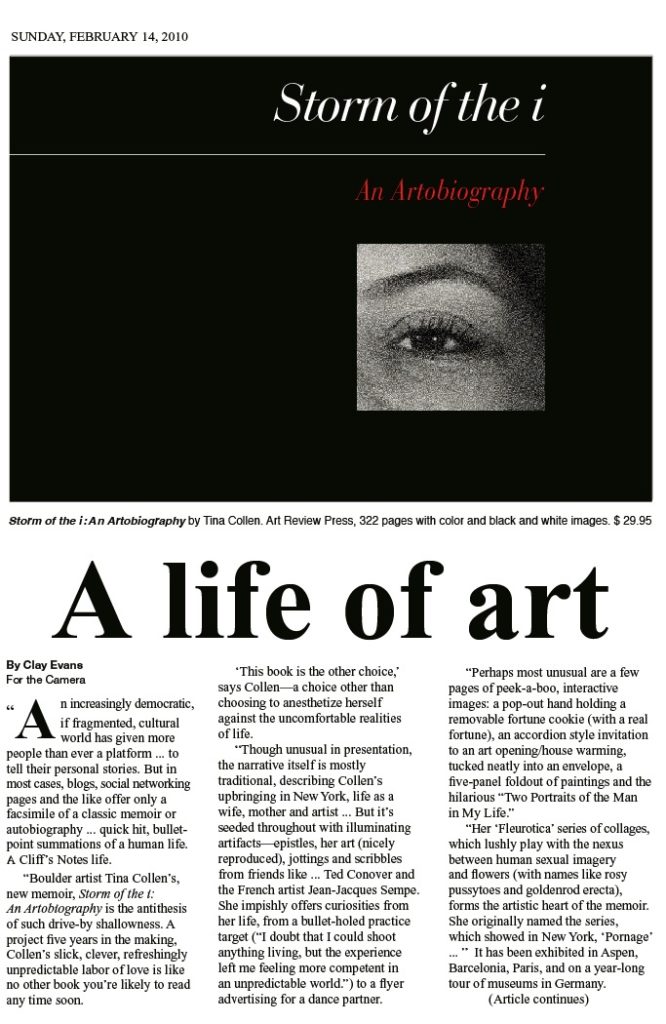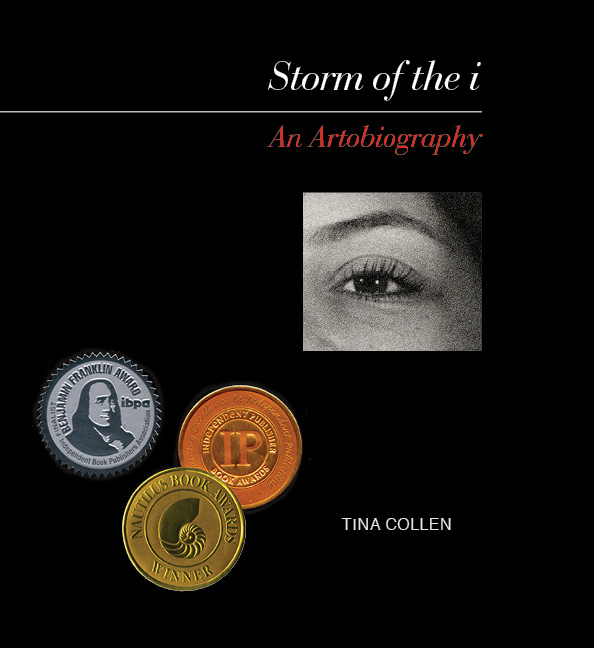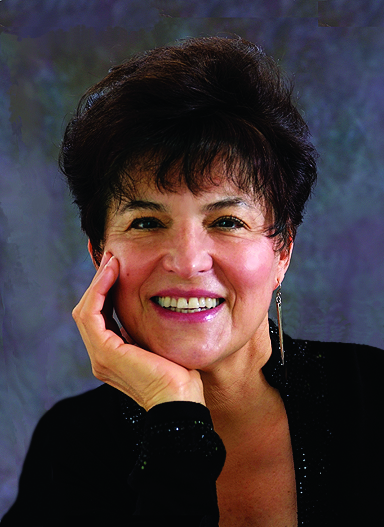Storm of the i : An Artobiography

Each participant receives a copy of Storm of the i. The Artobiography Experience is not an art or writing workshop, no special talents are necessary—just a willingness to participate and an interest in personal insight. If a piece is created that’s worthy of keeping, that’s a bonus. All materials are provided: magazines, scissors, glue sticks, etc. We spend some time selecting and cutting out pictures and headlines or sections of text with words, whatever seems appealing, keeping this thought in mind: More than anything, I’d like you to know this about me.
When we’re finished the spontaneous collage boards are put up on a wall. There are no signatures, everything is anonymous. I ask for interpretations about what the person who created this is trying to communicate about themselves. That person gets to hear what others think they have revealed. (Sometimes it’s surprising to them.)
The conversations are most lively, entertaining and insightful when the people involved are friends and know each other well. At the first Artobiography Experience I facilitated, the group was intent on figuring out who had done each piece and, much to my surprise, immediately guessed every one.
“As the child of a critical father, I, in particular, related to this memoir. The Artobiography Experience of “spontaneous collage,” which was a wonderful evening with close friends, revealed to me something quite personal about a cross- road I am facing right now. That it is game time for me (one of the words I unconsciously put in the center of my collage) became quite clear.”
—Anya Kirva
“The piece I made seemed to be a snapshot of this moment in my life. I wanted to put a date on it to mark this time. The collage I made looks like it’s from another era. My mother passed away 9 days earlier and I’m filled with memories of her, steeped in a lifetime of her possessions. Making the collage helped me see and embrace, own actually, how much of my mother is a part of me … and I have this collage to help with this passage in a very sweet way.”
—Sally Powell-Ashby
If you’re interested in arranging a workshop with your friends or book group text Tina Collen 303-443-1516.
Events
& Multimedia Presentation
Tesla Gallery, Boulder
TINA COLLEN’S MEMOIR
Storm of the i:
An Artobiography
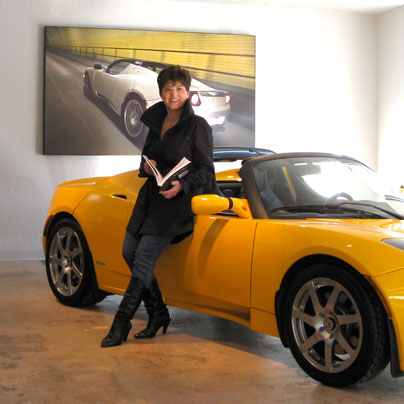
And what does a Tesla Electric Car and Tina Collen’s memoir have in common? Healing. One is about healing the planet and the other is about healing one’s heart. They’re both clearing the air and doing it with style and cutting-edge design.
130 people showed up and everyone who came early was invited to check out the gorgeous Tesla sports cars before the book event. Zero to 60 in 3.7 seconds.
Kabbalah Live Lecture Series
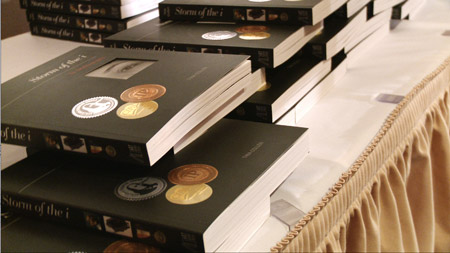
Goldberger Center, Denver
Each presentation offers a different artist or writer at the top of their game to speak about their “Aha!” moment
“Book of the Year” Gold Medal winner
ForeWord magazine reviews 2000-plus books a year from the country’s top small presses for the magazine’s readership of librarians, booksellers, and 125,000 website visitors.
BookExpo America book signing
Jacob Javits Convention Center NYC


Center: Nautilus Gold Medal winner

Nautilus Book Award Gold Medal winner
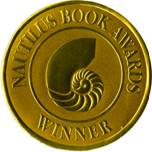
They review and acknowledge books that promote conscious living and positive social change, books that offer life-affirming options to a world that longs for a new story. Their process is long and labor-intensive and is carried out by three teams of judges—highly qualified, experienced reviewers located across the U.S. with successful careers as editors, writers, publishers, librarians, college professors and bookstore owners. Previous winners include the Dalai Lama, Deepak Chopra, Eckhart Tolle, Andrew Weil, Barbara Kingsolver, Marianne Williamson, Naomi Wolf and on. The Essential Box Set of Landmark Speeches & Sermons of Dr. Martin Luther King, Jr. won a silver in 2010.
Interview on Sirius XM Radio
with Maggie Linton
and an interview on KGNU Radio
with Sharon Jogerst
“Collen’s talks are inspiritational and audiences for her multimedia presentations have been growing steadily. At her last book event, the Denver Eclectics, she addressed an audience of 250. She concludes her presentations with a shocker—the story of what transpired (after she finished writing the book) between her and her father who is now 95.” —KGNU Radio, Denver Colorado

Aspen Comedy Festival, of all places
Excerpt reading
Revealing self portrait mystery

Boulder JCC Presentation
& Book signing
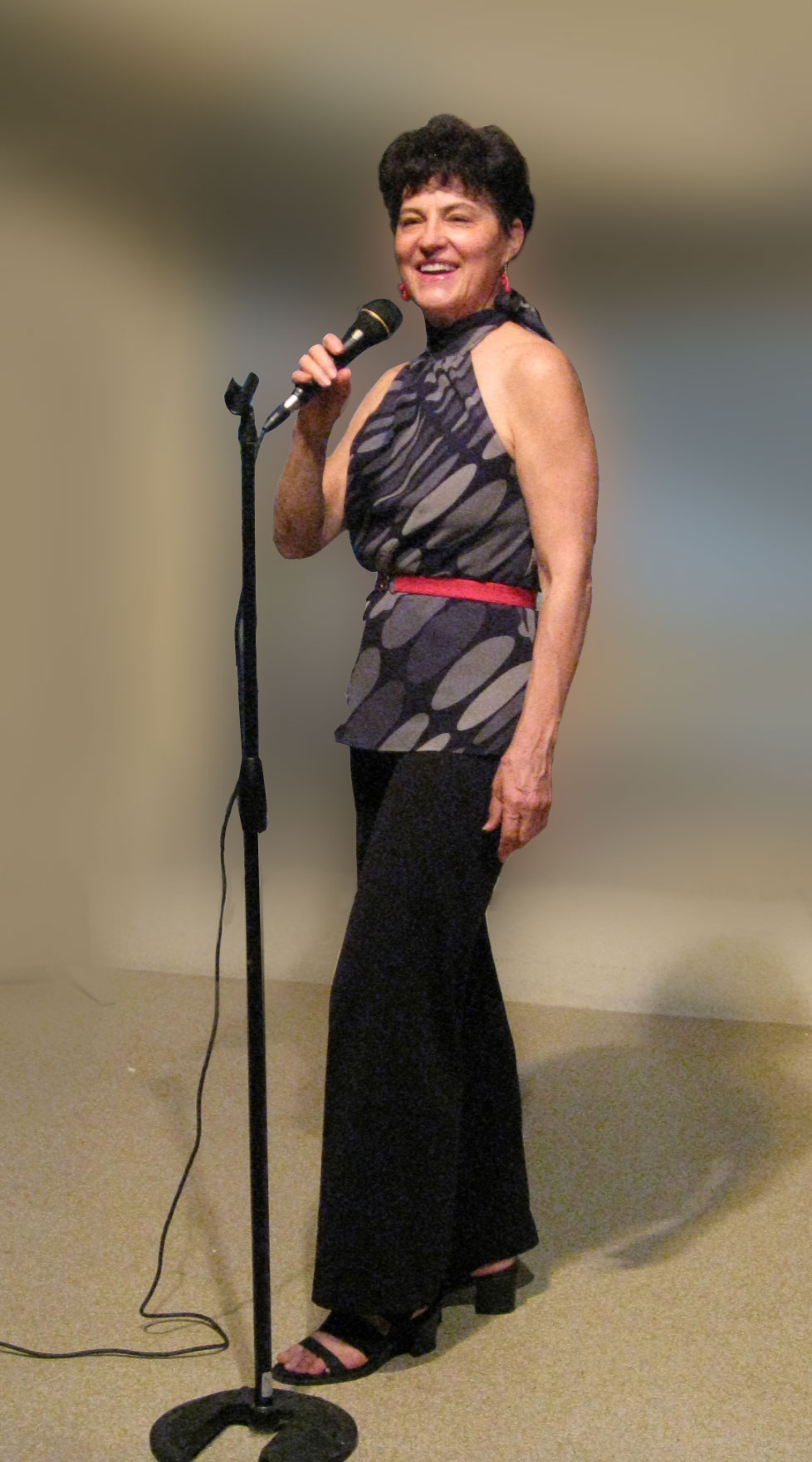
Barbed Wire Books
Longmont, Colorado
Book giveaway
The author is giving away an autographed book to the reader who posts the most thought-provoking answer to this question:
Oftentimes the objects we hold onto contain cryptic clues that point towards something deeper about ourselves. Take a look around your house (or your room) at the things with which you have surrounded yourself. Is there anything you are still hanging onto that seems to contain a hidden message for you?
A book went to Karelle who commented:
In my kitchen I saw the wok that my mother gave me so many years ago and was reminded of the feeling I carried around for so long that she was still trying to control me from the grave. When I was bringing up my daughter I would think about what my mother would do and then I would do the exact opposite. Now I’m reminded of all the things she told me that turned out to be true.
Excerpts from the Blog Tour
DOING IT WITH GRACE (https://doingitwithgrace.blogspot.com)

SANDY’S BOOKCLUB
https://sandrasbookclub.blogspot.com
Today is the day. We have author Tina Collen here with her book, Storm of the i. This is her guest post:
My father didn’t speak to me for 15 years and I never knew why.
Then I wrote the book I needed to read.
On the first three stops of this Virtual Book Tour, I talk about the inspiration for writing my memoir but let me tell you what happened after I wrote it. When I finished the first version, I thought I was finished, but as I re-wrote and worked on it, an interesting thing began to happen.
The blame started to come out of the story. It wasn’t an easy thing for me to do. Something inside of me wanted to keep on blaming, keep on being self-righteous, keep on being the victim. But as my emotional life became imbued with my objects and my writings about them, and everything stayed in front of me day after day, the blame somehow started to dissolve. And as it disappeared from my writing, it started to disappear from my life as well. I was able to say “This was my story instead of this is my story. A simple change of tense changed my life, moved it out of my way, put it someplace I could always find it if I needed to.
So when I was really finished, I took the manuscript with me to New York when I went to visit with my sister and brother-in-law. Since they are an essential of the story, I wanted to be sure it was okay with them before I went ahead. I think they silently hoped the book would never be published. I’m sure they were worried about family repercussions. They thought it imperative that my father not know about the book. But they wanted to be supportive and gave me their tacit approval.
So before I leave New York, my brother-in-law gives me a CD of one of his favorite songs, “Father and Daughter.” Maybe you know it—it’s that beautiful song that Paul Simon wrote for his baby daughter. The refrain is, “There’s never been a father who loved his daughter more than I love you.” And it brought tears to my eyes—because that kind of loving sentiment always made me feel bereft and excluded.
I got back home to Boulder and played it again. And this time, I imagined what it would feel like to BE that little girl basking in her father’s love. And imagining the feeling turned into actually experiencing it. And I wondered, Where is that feeling of love coming from? and then I realized that the feeling was coming from someplace inside of me. And I’d included that story in the Epilogue of the book.
A week or two after I had finished the final edit and the book was being printed, there was a big family shindig in New York in a fancy hotel with 200 hundred guests. Months before, my sister had asked me what we should do about the seating arrangement because at the last family event, her daughter’s wedding, 4 or 5 years ago, she’d seated me and my contingent at a different table from my parents and when I went over to say hello to them and went to put my arms around my father, he pushed me away. So you can see why she was concerned. But I told her, “Why don’t we just try to be a normal family and all sit at the same table.” What’s the worst that can happen. He gets up and leaves. We’ve lived through worse.”
“Okay,” she said.
When the night arrived, it was the summer before last, everyone was on pins and needles about how my father would behave. No one wanted a scene. They were very nervous.
My two sons, my daughter-in-law and my ex-husband were with me. We walk in and are greeted by a crush of friends and relatives. While I talk to them, my ex-husband sees my parents, who are already seated at the table, and he goes over to talk to them. He gets down on one knee so that my father can hear him more clearly. At that point my father was 93. My mother was 90. After a few minutes, one of my sons does the same. I look over. It seems to be going well.
I make my way through the crowd and go over to them. I come up beside my father and he looks up at me and his eyes fill with tears. “Thank you,” he says. He takes my hand and pulls me down to the seat next him. He puts his arms around me. And then we sit hand in hand, with him telling me, he’s there for me, I should come home to visit more often. And my father and I talk and we laugh. The whole family is in disbelief. No one knows what to think or if it will last. He hadn’t spoken to me in many years.
We’ve just finished our dessert when the DJ starts to play Father & Daughter, the Paul Simon song. (Honest! No kidding. This really happened.) And it feels like they’re playing my song. And then the music switches to a big band era song (his music). And my father stands up— and he asks me to dance. And we danced.
BOOK FETISH Q&A
QUESTION:
What started you writing this book? It’s such an dramatic mix of emotional narrative and graphic images.
ANSWER:
The galvanizing energy struck me like a Zeus lightning bolt from, of all places, the stage of a comedy festival on Valentine’s Day in Aspen, Colorado. That evening took a turn I didn’t expect:
Very smart and funny, the producer/director of Sex and the City, Michael Patrick King, spoke about how events in his life intersected with his creative work. He stood center stage, alone, unscripted, and revealed his dreams, his fears, his regrets—all disarmingly sprinkled with embarrassing anecdotes. He recounted his conversation with the show’s star, Sarah Jessica Parker, concerning their urgency to find a new love interest once her current beau, Mr. Big, was written out of the script. With great humor King described how the two of them plotted to ensnare the famously dramatic Mikhail Baryshnikov for the role. The back story details culminated in a colorful description of how King’s own torrid affair with Baryshnikov became director-and-actor in front of the camera and lovers behind the scenes. Though I admired the producer’s high-octane wit and personal charm, I was even more impressed by the rawness of his candor.
Next Teri Garr walked awkwardly on stage and explained why she had not been seen in public for several years. She was suffering from multiple sclerosis. Unable to do films any longer this appearance was to be her debut as a stand-up comic. An uneasy hush fell over the audience. Our discomfort, however, quickly turned to appreciation, as it became clear that her disability was not the obstacle that it first appeared to be. Warmed by her humor, we were soon laughing along with her at memories of life in Hollywood as a young adventurous sexpot in the 70’s.
Richard Pryor’s daughter Rain followed and spoke unflinchingly about growing up in the shadow of a much celebrated comedian father—a young girl in the midst of drugs, abuse, and craziness. She spoke earnestly about the relationship of pain and humor and described how she had finally found her own way to the stage. By the time she was finished, my eyes were rimmed with tears.
I left the tent simultaneously spellbound and drained—deeply touched by the performers’ courage and humanity. The impact of seeing them confront their issues stayed with me for quite some time. I thought about my own art and how it intersected with events and challenges in my life, and whether I, too, would have the courage to expose my vulnerable parts on my stage.
I realize now that I’ve always faced emotional issues by either writing or making some kind of art and it seems this book is a combination of both—a narrative interwoven with art and memorabilia plucked from my life. It’s an “artobiography”—clearly, my attempt to put all the pieces together, both literally and figuratively.
